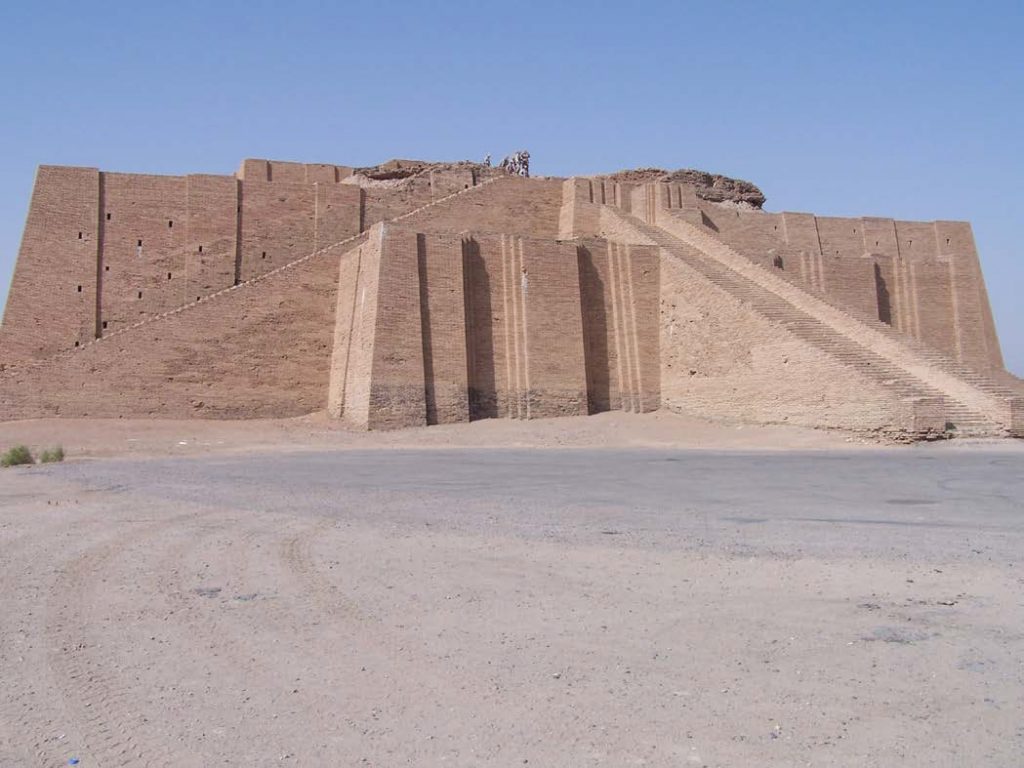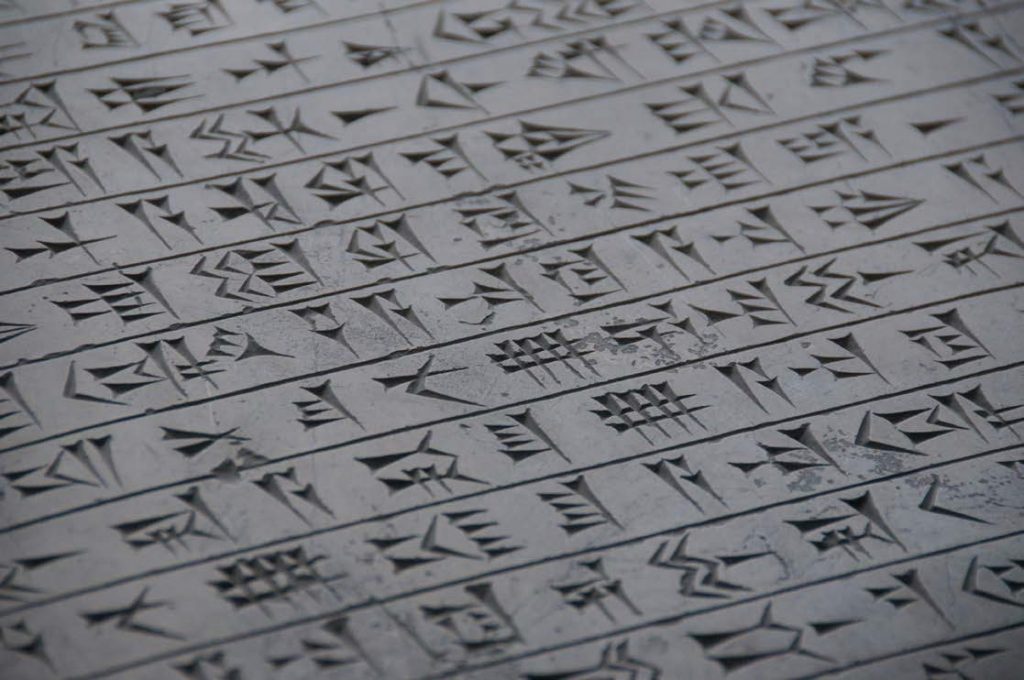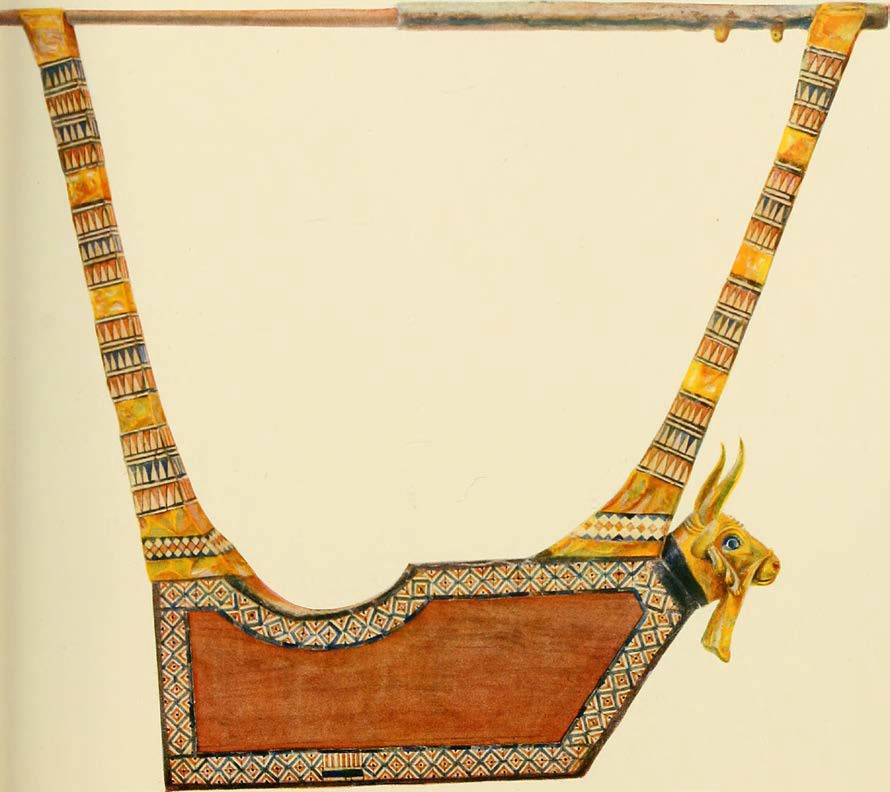Sumerian City-States
Sumerian City-States
Lower Mesopotamia, or the southern areas of Mesopotamia towards the Persian Gulf, drew settlers, who moved to take advantage of rich soils and the availability of water in the area commonly known as Sumer. The people who lived in Sumer are generally referred to as Sumerians. Prior to 3,000 BCE, Sumerians, whose origins remain a subject of debate, founded a number of independent cities in Lower Mesopotamia. In these cities, Sumerians had organized religions, centralized governments, social hierarchies, and access to trade networks. As these cities expanded, their leaders claimed control over adjacent territories, forming at least a dozen city-states, which became the basic organizational structure of Sumerian civilization in the third millennium BCE. By incorporating the surrounding territories into city-states, urban centers were able to draw on more resources.
Sumerian cities had certain characteristics in common. First, a temple complex or a ziggurat was usually the visual focus of the urban landscape. Sumerians believed that their entire city belonged to its main deity, and built a massive temple, the most important building in the city, to be the dwelling place of their city’s main god or goddess. A complex that comfortably housed many of the priests and priestesses who served the city’s deity surrounded each temple. In addition to attending to the religious needs of the community, temples complexes also owned land, managed industries, were involved in trade, and acted as banks. Their wide-ranging roles meant that temples often had additional outbuildings, like granaries and storage sheds, in the surrounding countryside. Sumerians were polytheistic, meaning they worshipped multiple gods and goddesses. Because Sumerians believed each god had a family, they also built smaller shrines and temples dedicated to these divine family members. Therefore, each city would have a number of temples while many Sumerian homes had small altars dedicated to other gods. Sometimes, urban temples or ritual spaces were built atop a ziggurat, a solid rectangular tower made of sun-dried mud bricks.

Archaeological evidence shows that temple complexes were expanded and rebuilt over time and, by the late third millennium BCE, temples in many of the Sumerian city-states were raised on platforms or else situated on a ziggurat. The towering architecture of the ziggurat stressed the significance of the temple to the surrounding community. The best- preserved ziggurat, the Great Ziggurat of Ur, was constructed with an estimated 720,000 baked bricks and rose to a height of about 100 feet. The people of Ur constructed this ziggurat for their patron deity, the moon goddess Nanna. They likely brought regular offerings to Nanna and also received food rations from the Great Ziggurat of Ur.
Viewing nature as unpredictable, people brought offerings to their city’s temple complexes or ziggurat, hoping to please the gods who controlled the natural forces of their world. Priests and priestesses collected and redistributed the offerings, demonstrating the vital roles they played in Sumerian society. The relatively privileged position of priests and priestesses at the temple complex also shows Sumerian social stratification (the development of a hierarchy) and how agricultural surpluses supported the specialization of labor. Some of the early leaders of Sumerian cities may have been “priest-kings,” who attained elevated positions through their association with the temples. The later rulers of city-states definitely supported the temples, claiming to be acting on behalf of the gods who brought divine favor to their followers.

Sumerian city-states had local rulers, who lived in large palaces, but most of these local rulers were not considered kings. So far, archeologists have dated the earliest known royal palaces to 2600 BCE and conclude that Sumerian city-states had centralized governments with secular rulers by at least that timeframe. While there does seem to have been a sense of inhabiting a shared space in Southern Mesopotamia, referred to as “the Land” in written records, city-states had distinctive identities. In part, their distinctive identities revolved around their main deity. The rulers of city-states alternately supported, competed with, and fought against one another. The Sumerian King List (Figure 2.2), a manuscript that listed early kings and described their reigns (with some presumably fictive and exaggerated elements), provides evidence of these alliances, competition, and war. For example, it describes En-mebarages as the second to last king of the 1st Dynasty of Kish, “…who carried away as spoil the weapons of the land of Elam, became king, and reigned 900 years…”[1] Local rulers often came to power after proving themselves militarily.
Furthermore, the Sumerian King List recognized only rulers who had established control over multiple city-states as kings (with the title of lugal in the Sumerian language) belonging to distinct dynasties. While it lasted, a dynasty generally passed down the kingship through the male line. According to the Sumerian King List, the seat of power, held by hereditary kings, shifted from city-state to city-state with the rise and fall of dynasties through the third millennium BCE. Significantly, the Sumerian King List began its recorded history “when kingship came down from heaven,” legitimizing secular kings through their association with gods.[2] Sumerian kings, often along with more local rulers, led armies, collected taxes, organized labor for state projects, and meted out justice. At the top of the hierarchy and with control over multiple city-states, kings expected obedience from local rulers and their subjects, and support from the priests and priestesses of the temples.
Kings, local rulers, priests, and priestesses held influential positions in Sumerian societies. However, farmers, taken as a whole, made up an estimated 90% of the population. Other skilled people included animal-breeders, merchants, craftspeople, fishermen, doctors, soldiers, architects, and scribes. Surplus agricultural production collected as tribute as well as wealth generated by trade supported such labor specialization. One important outcome of labor specialization was innovation in metalworking. In approximately 2900 BCE, metalworkers began producing bronze, which was stronger than copper. Stronger weapons and farming tools gave Sumerians advantages when it came to combat and agricultural production.
Social stratification is further evident as some Sumerians and even institutions, including temples, owned slaves. Slaves performed a variety of tasks like construction, weaving, agricultural and domestic labor, tending animals, and even administrative work as scribes. Some slaves were chattel slaves, meaning that society treated them as property with no rights. Usually, chattel slaves were prisoners of war or slaves bought from outside communities. They were branded by barbers or tattoo artists and forced to work at the will of their masters. If they tried to run away, the law required slaves to be returned. The more widespread type of servitude in most Sumerians societies was likely debt slavery, which was generally temporary until a debtor paid off a loan and its interest. Over the past century or so, archaeologists have added a great deal to our understanding of Sumerian social distinctions through their work at numerous excavation sites, but many gaps in our knowledge still exist.

The archaeological discovery of cuneiform tablets at these excavation sites has aided efforts to learn about this civilization. Sumerians developed cuneiform, a written script of wedge shaped marks, around 3200 BCE. Cuneiform was one of the earliest, if not the very first, written script in the world. The Sumerian King List, discussed above, was recorded in cuneiform. Merchants, scribes, administrators, priests, and others kept written records describing financial transactions, court proceedings, administrative decisions, and architectural plans.
They also wrote legends, epic poems, chants, and prayers. Most people were not literate, so scribes—who had been specially trained in scribal schools—generated many of the records. While in school, in addition to copying written passages, scribes learned arithmetic. The Sumerians system of arithmetic was based on the number 60, which we still use to divide time into hours, minutes, and seconds. Scribes used styluses made of reed to write on clay tablets that were dried and could be stored. The discovery of cuneiform tablets has greatly aided archaeologists, but only a small percentage of the tablets found to date have been translated.
Using archaeological and written evidence, scholars have pieced together what they can about everyday life for Sumerians, though some questions remain. For instance, it has been a challenge to determine the layout of urban spaces beyond the prominence of the temples and the relative grandeur of palaces. From archaeological finds, scholars suspect that Sumerian cities were divided into neighborhoods by occupation and according to kinship groups, but uncertainties about specifics linger. Legal documents and tax records show that people owned property in both the cities and the countryside. Also, evidence suggests social stratification, as some Sumerians owned fairly large chunks of land, while others had much smaller plots or presumably no land at all. Wills, court proceedings, and temple documents show that land and temple offices were usually bought or else acquired through military or other service to the state. A man inherited land, property, offices, and their attendant obligations to the state (like reoccurring military service) from his father. The eldest son seems to have frequently inherited a larger share than younger brothers and have been given control over the family home. He was tasked with performing regular rituals to honor dead ancestors, who were usually buried underneath the home. From the written documents, we also get glimpses into other aspects of Sumerian life, like marriage and divorce.
Sumerians viewed marriage as a contract between two families and, as a result, the male heads of the two families arranged a couple’s marriage. Documents show that both families contributed resources to seal the union or complete the marriage contract. The man’s family gave gifts or money and hosted a feast, while the woman’s family amassed a dowry. Although a woman did not automatically receive an inheritance upon the death of her father, she could expect (and use the court system to make sure she got) to receive a dowry, even if it came from her father’s estate after his death. Divorce was possible but sometimes led to social ostracism or even punishment if there were accusations of misconduct, such consequences being especially the case for the woman. Records indicate that polygamy was not common, but wealthier men did keep slave-girls as concubines. Overall, Sumerians considered marriage an essential institution in that it brought families together and ensured the continuation of the family lineage.

Legends, myths, poems, and literary texts tell us about Sumerians, too. For example, we can explore their values and views of the afterlife through reading the Epic of Gilgamesh. The Epic of Gilgamesh relates the adventures of Gilgamesh, a legendary king, who may have lived around 2700 BCE. The epic has multiple versions and was told orally before it was first written down in cuneiform in about 2000 BCE. The epic follows the heroic exploits of Gilgamesh and his companion, Enkidu, to emphasize the importance of values such as loyalty and humility. In one section, the epic describes a very gloomy afterlife where “people see no light, they sit in darkness,”[3] reflecting Mesopotamian beliefs that the afterlife was miserable for all, even those who had lived virtuously. Additionally, it portrays the environment as potentially violent and hostile as in its flood story, which in some ways resembles the account of Noah and the flood found in Genesis. Ultimately, Gilgamesh fails at his quest to find eternal life but learns to work for the glory of the gods and for worthwhile human achievements.
Other archaeological finds and the written documents also give some hint of the wider popular culture and artistic conventions in ancient Mesopotamia. For example, cuneiform tablets with pictures of dancers and singers, as well as instruments found in graves, suggest that Sumerians placed importance on music, using it for entertainment and ritual purposes. Trying to learn more about Sumerian music, scholars and other enthusiasts have replicated these instruments and presented their best estimation of Sumerian scales and tuning. The documentary evidence suggests that hymns from the ancient Sumerian city-states were shared with later Mesopotamian empires and even spread into the Mediterranean world.
What was it like to live in Ancient Sumer?
- 1 J.N. Postgate, Early Mesopotamia: Society and Economy at the Dawn of History, (London: Routledge, 1994): 28. ↵
- Ibid. ↵
- 3 Excerpt from: The Epic of Gilgamesh, trans. Nancy Sandars (New York: Penguin Books, 1960), http://web.archive.org/ web/20010217041824/http://www.humanities.ccny.cuny.edu/history/reader/gilgames.htm ↵

